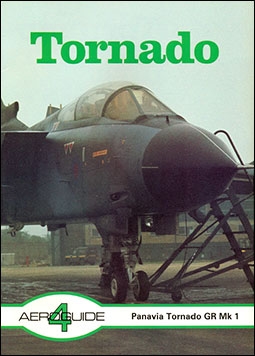
Modern combat aircraft are complex machines, and in order to be cost-effective they are frequently designed to satisfy a wide range of militarily important parameters: high speed at altitude; high speed at low level; good climb rate; good range; fuel economy; a heavy weapons load; high accuracy in navigation capabilities and weapon delivery; low stalling speed (and, as a corollary, short take-off and landing runs); and low maintenance demands. All things are relative of course, but one aircraft fulfils these requirements far better than any other currently in service: Tornado. It may not be as agile as the F-15 Eagle, nor possess the high level speed of the MiG-25, the range of the Buccaneer or the climb rate of the Lightning (according to most published figures), but it has several times the versatility of any one of these. It is moreover a product of extremely advanced technology: for example, strike missions can be flown entirely 'hands off' other than during manoeuvres near 'the circuit'.
This complexity inevitably means that the Tornado can be depicted in only a few of its mission configurations within the space available to a single Aeroguide, which also confines treatment of the subject principally to Royal Air Force IDS machines. Comprehensive coverage of Tornado markings alone would require more than one volume, and it is hoped that German and Italian readers in particular will not be too irritated by the necessary omissions and will take some comfort from the fact that Tornado IDS airframes are, apart from some small details such as dorsal and fin-mounted antennas, essentially similar whatever insignia happen to be carried. A further qualification is that certain details of so technologically advanced and modern a military combat aircraft are of course classified.
Regular readers will notice that Aeroguide 4 (and, for that matter, Aeroguide 3, which considers the Sea Harrier) introduces a slight shift in emphasis inasmuch as an additional spread depicting aspects of the airframe has been included, at the expense of the section dealing with the undercarriage. This modification, it is felt, gives an improved balance to the content.
Indispensable assistance in the preparation of this volume has once again been rendered by the Royal Air Force, in particular by Sqn Ldr B Watford, Community Relations Officer at RAF Honington, and by members of the Tornado Weapons Conversion Unit (in particular Fit Lt Reynolds); uncredited photographs in this book, which are copyright Linewrights Ltd, were taken on the TWCU flight line by kind permission of the Officer Commanding, RAF Honington. Tony Talbot, lately of RAF Strike Command HQ, kindly co-ordinated arrangements once more. British Aerospace Warton Division (in the forms of Alexander Johnston, David Kamiya and Geoffrey Hill) were most helpful in supplying photographs from the manufacturer's library, whilst the publishers are once more indebted to Brian Limbrey of the Martin-Baker Aircraft Co Ltd and to Dick Ward of Modeldecal for their invaluable help.
For the future, there have been some necessary revisions to the planned Aeroguide publishing programme. No 6, originally announced as being devoted to the Phantom FG Mk 1 and FGR Mk 2, will instead deal with the Vulcan, perhaps the most distinctive and certainly one of the longest serving postwar RAF aircraft, and of course one of the several types to which the Tornado is a successor. The Phantom volume - or more probably volumes - is certainly scheduled to appear later in 1984, but details have yet to be finalised. Meanwhile work is pressing ahead on the Aeroguide Classics. Announcements about the availability of these titles will be made via the aviation and modelling press.
Название: Panavia Tornado GR Mk.1 (Aeroguide №4)
Автор: Roger Chesneau, Raymond Laurence Rimell
Publisher: Linewrights Ltd
Год издания: 1984
ISBN: 0946958033
Страниц: 36 pages
Язык: english
Формат: pdf
Размер: 82 MB
=============================








